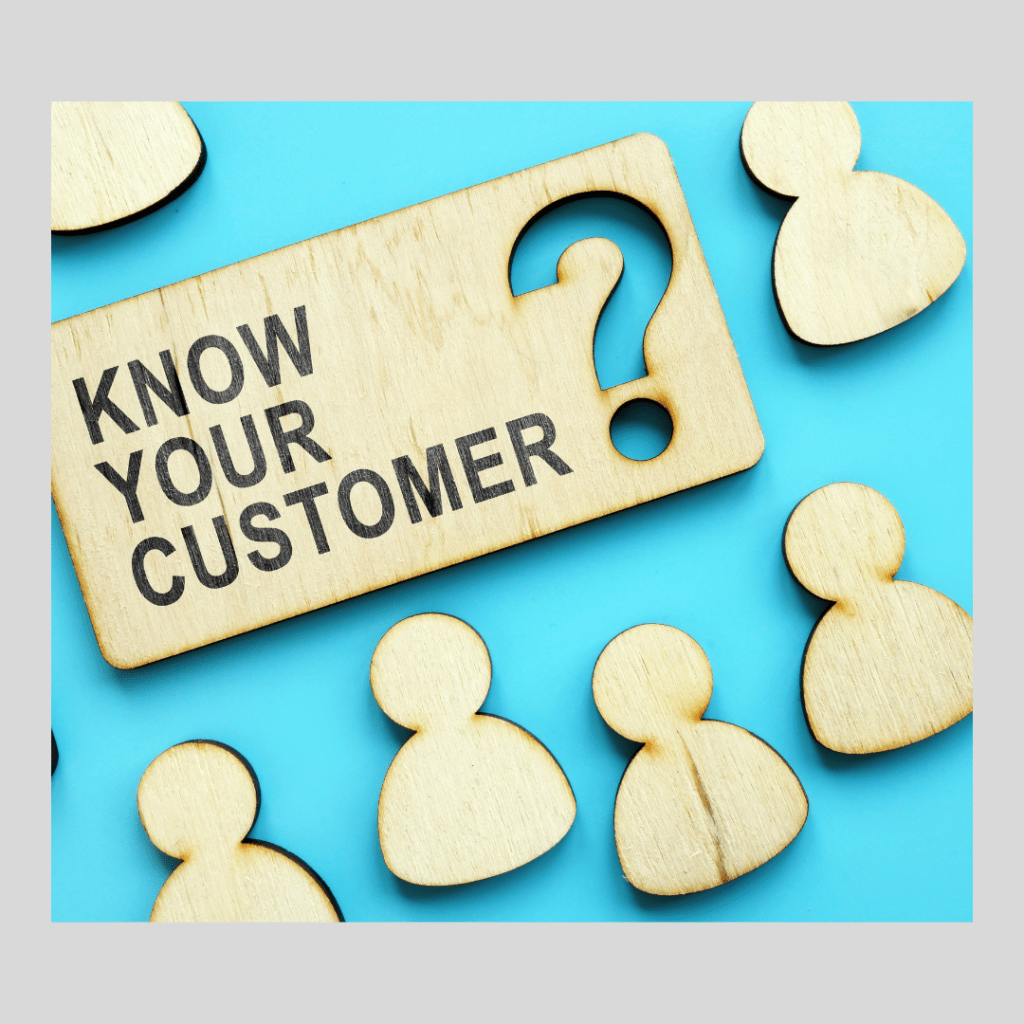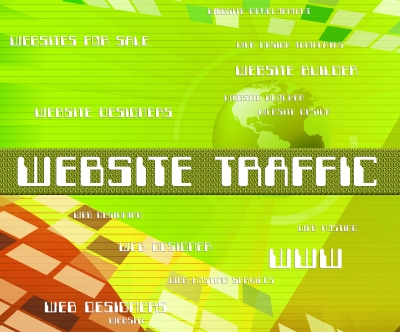
This sounds like just another one of those buzz word things – so what am I talking about?
Every business wants their customers to be happy with the service and experience they receive. But, unless you have your customers in mind at every single touch point, you could be missing out on some great opportunities to delight them and keep them coming back for more.
What is a touchpoint? According to SurveyMonkey, the definition of a touchpoint is “…any time a customer or potential customer comes into contact with your brand…before, during or after they purchase something from you”
You may have great products, delivered on time and with a smile, but if your advertising isn’t on target, or they receive billing mistakes, or have to deal with a clumsy and clunky website, you can scare your customers away. Luckily, these touchpoints are easily fixed and within our control.
Let’s take a look at the general touchpoints a customer will come across…these are just some examples.
Before a sale – Social Media sites, Website, Customer reviews, Advertising/Marketing.
During a sale – Shop or office, Catalogue, Phone.
After a sale – Billing, Emails, Newsletter
Make a list of the touchpoints your customers have with you, then look at them in turn, e.g. your website…is it easy to navigate? Do the tabs point to the right things? Do the links work? Are you easy to contact? Do customers get a quick reply if they do contact you?
Supercharge your touchpoints
Now it’s time to supercharge your touchpoints for a better customer experience.
Personal touch – Try and speak to a customer wherever you can as most people like to be treated as individuals. I prefer to speak to a real person, not an automated service as I can ask questions and, if there is something I don’t understand, I can simply ask. It is also easier to build a relationship with your customers if you actually take the time to talk to them, as it makes them feel valued. They will feel that they are important to you and your business, that their custom is appreciated and that their opinion matters.
Consistent Service levels – Be consistent across all your dealings with customers, not just on the phone. You have won their custom and now it is time to build their loyalty and gain that all important customer satisfaction. So, not only ensure that you give excellent customer service on the telephone, ensure that they receive the same experience if they email you, such as a prompt reply, with the answer or solution they want wherever possible.
Know your customers – Know what your customers want and who they are. If you can solve a problem for a customer, do it…they will always remember that you went that extra mile…and will recommend you to family and friends. Something that you did this year that went really well, might not work next year – never make assumptions where your customers are concerned. One of the simplest ways to know what your customers want is to ask them. This could be via a courtesy phone call (but be careful not to be a nuisance), via a short survey or hold an event, where you can interact directly with your customers and they can see who you are and meet you properly.
Resolve any mistakes – If you make a mistake, own up to it and put it right quickly. Don’t blame anyone else, just resolve it and offer some kind of compensation, such as 10% off their next order. The four step system is a good way to deal with complaints.
Listen to the complaint…don’t argue or put the blame on someone else – the customer doesn’t want to hear this – he/she just wants you to listen to what they have to say.
Acknowledge the complaint – let the customer know that you understand their complaint by relaying it back to them. This not only shows that you have been listening but gives hope that something will be done. Thank them for bringing the situation to your attention and assure them that something will be done.
Solve the complaint – if you can, resolve the issue, keeping the customer informed along the way. In the first instance, after you have acknowledged the complaint, say that you will look into it and will get back to them within 24 hours – even if you haven’t resolved the problem yet, ring them within 24 hours to let them know what’s happening. Keeping them informed every step of the way is very important in keeping that customer in future and lets them know that they are a valued customer.
Thank them – you have already done this when you acknowledged the complaint but do it again. If the issue has taken or is like to take a long time to resolve, maybe offer them some kind of compensation – a money-off voucher or a free gift.
Appreciate your customers – Let your customers know they are valued, e.g. send regular customers a ‘thank you’ card, or give them a money off voucher for being loyal, or ask if they’d like their purchases gift-wrapped.
It’s also really crucial to look past the sale…once your customer has bought something from you, don’t make it the last time they hear from you…follow up the sale and ask how they are getting on with the product. Are they happy with it? Do they think it could be improved? Do they have any questions about that or any other product that you sell? They may tell you about a problem they have that you can solve for them, or give you an idea for a new product.
If your customers are really happy with the goods and/or services they receive from you, ask them if they could write a short review, either on your Facebook page or on your website…or if they prefer, they can send to you on email. Ask if it’s OK to share their review with other customers and potential customers.
Whether your business is a huge concern, or just a one-man/woman team, excellent customer service must be at the heart of everything you do. It can take extra time and resources, time and money, but good customer service leads directly to customer satisfaction, which can generate great business for you via word of mouth. It can also you’re your business thrive and ultimately be a success. Never underestimate the power of good customer service – it’s your businesses life-blood.
Please feel free to email me if you have any questions or need any help with your marketing. I offer a free discovery call to discuss your business and how I can help.










 The key word here is ‘valuable’ content; content that will speak to your customers, content that they want and need, maybe information that solves a problem they have. In order to do this, you need to know your existing customers and research and get to know your prospective customers, so you can deliver that all important content. It may take some time to get it right, but when you do, you will have the opportunity to expand your business, build your reputation and ultimately be known as an expert in your field.
The key word here is ‘valuable’ content; content that will speak to your customers, content that they want and need, maybe information that solves a problem they have. In order to do this, you need to know your existing customers and research and get to know your prospective customers, so you can deliver that all important content. It may take some time to get it right, but when you do, you will have the opportunity to expand your business, build your reputation and ultimately be known as an expert in your field. Depending on what you do, that could lead to a sale or a request for your services…and they are likely to return to your site in future.
Depending on what you do, that could lead to a sale or a request for your services…and they are likely to return to your site in future. business, they are not in the least bit interested in your brand, no matter how hard you’ve worked on it. They are more interested in what you can do for them. If you provide something that makes their life easier, less stressful, and cost-effective and generally entertain them, they will then become interested in your brand as they will see it as something they relate to.
business, they are not in the least bit interested in your brand, no matter how hard you’ve worked on it. They are more interested in what you can do for them. If you provide something that makes their life easier, less stressful, and cost-effective and generally entertain them, they will then become interested in your brand as they will see it as something they relate to. When you publish your content on your blog or website, make sure that you promote it on every social media site that you have…with maybe a jig around of the title or introduction. You can also contribute to larger sites to get your name out there.
When you publish your content on your blog or website, make sure that you promote it on every social media site that you have…with maybe a jig around of the title or introduction. You can also contribute to larger sites to get your name out there. We all want our businesses to stand out from the crowd. Although it takes some time and effort, it’s worth it to have a unique identity that is instantly recognisable. Here are a few ideas that can help you along your way to having your own brand identity.
We all want our businesses to stand out from the crowd. Although it takes some time and effort, it’s worth it to have a unique identity that is instantly recognisable. Here are a few ideas that can help you along your way to having your own brand identity. The first thing to do is to think about a mission statement for your business, which is a short sentence about what your purpose is. We all know Nike’s tagline, ‘Just Do It’ but did you know that their mission statement is ‘To bring inspiration and innovation to every athlete in the world’. So their mission statement encapsulates everything that the company is about and wants to achieve in one short sentence. This is no mean feat, but achievable for your business with a bit of thought. You could always get a few friends round and have a ‘get my mission statement’ party…but make sure you work on the statement before you start drinking…or you could have some very interesting stuff!
The first thing to do is to think about a mission statement for your business, which is a short sentence about what your purpose is. We all know Nike’s tagline, ‘Just Do It’ but did you know that their mission statement is ‘To bring inspiration and innovation to every athlete in the world’. So their mission statement encapsulates everything that the company is about and wants to achieve in one short sentence. This is no mean feat, but achievable for your business with a bit of thought. You could always get a few friends round and have a ‘get my mission statement’ party…but make sure you work on the statement before you start drinking…or you could have some very interesting stuff! Brand Colours – The colours you choose are more important than you might think – according to research by web design and marketing company, WebPageFX, people make a subconscious judgement about a product in less than 90 seconds of viewing, and a majority of these people base that assessment on colour alone. In fact almost 85% of consumers cite colour as the primary reason they buy a particular product and 80% believe that colour increases brand recognition. Wow! That’s quite powerful.
Brand Colours – The colours you choose are more important than you might think – according to research by web design and marketing company, WebPageFX, people make a subconscious judgement about a product in less than 90 seconds of viewing, and a majority of these people base that assessment on colour alone. In fact almost 85% of consumers cite colour as the primary reason they buy a particular product and 80% believe that colour increases brand recognition. Wow! That’s quite powerful. Fonts – When looking at your brand for the first time, people will notice the colours and also the font – the way the brand name is written. There are so many different fonts, so try and choose one or two that enhance your business name…for example if you sell vintage jewellery, look at a vintage font.
Fonts – When looking at your brand for the first time, people will notice the colours and also the font – the way the brand name is written. There are so many different fonts, so try and choose one or two that enhance your business name…for example if you sell vintage jewellery, look at a vintage font.